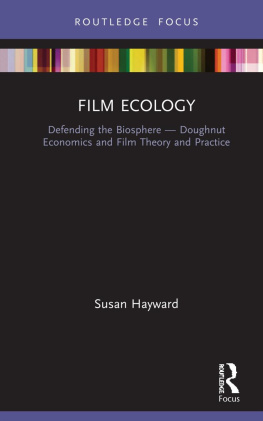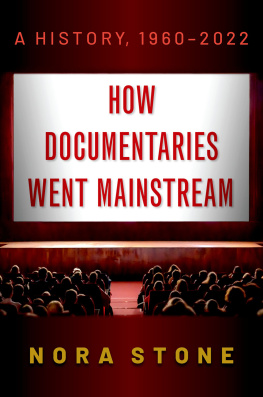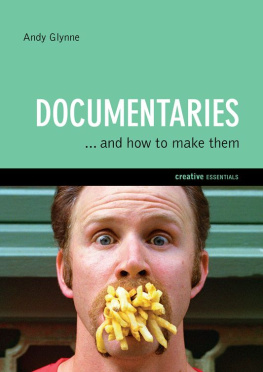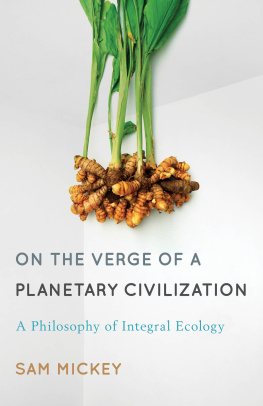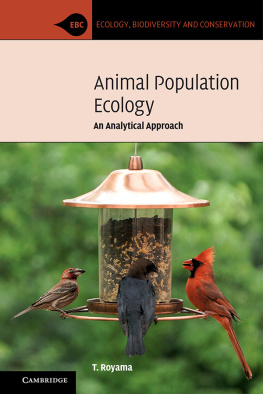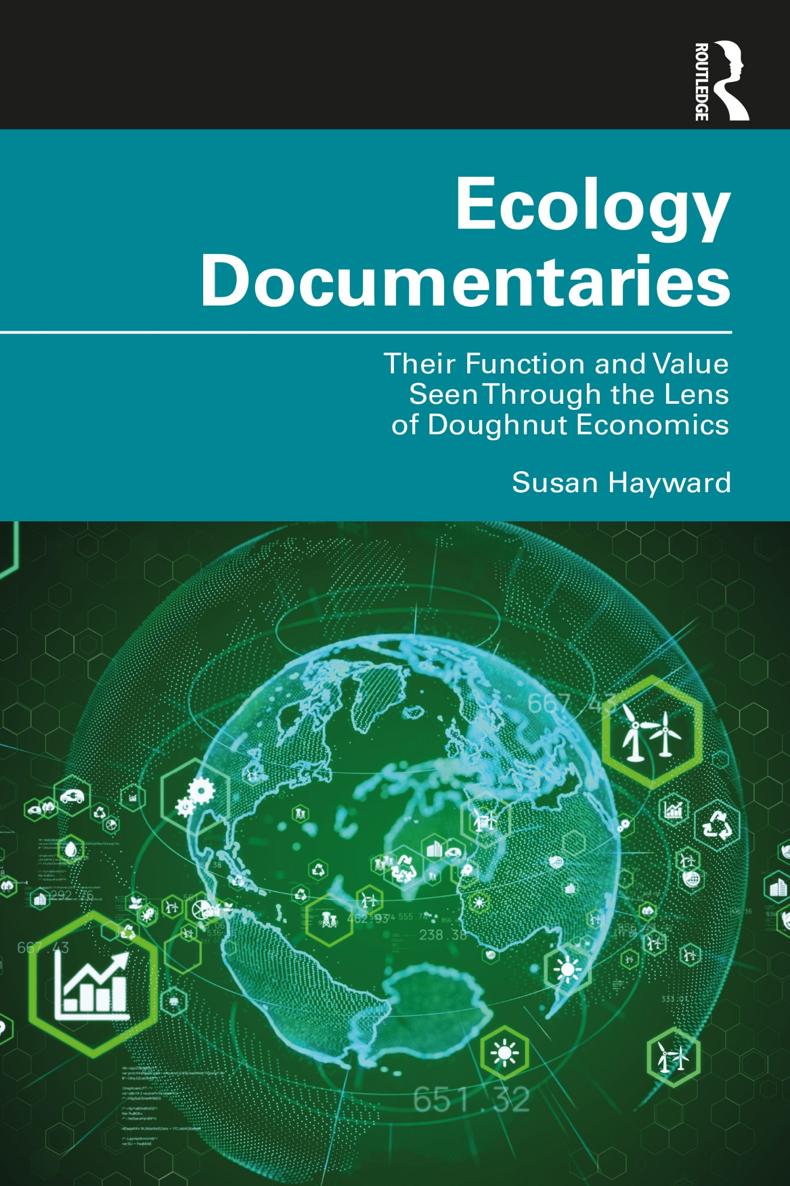Ecology Documentaries
This companion piece to Susan Haywards Film Ecology focuses on ecology documentaries produced in the first 20 years of the new millennium (200019).
Using Kate Raworths regenerative economic theoretical model as set out in Doughnut Economics , this book examines 57 films emanating from Europe and the 4 areas of concern they raise about energy production, pollution and waste management, agribusiness, disrupted ecosystems and the migratory flow. These ecology documentaries make explicit the damage done to our planet thanks to growth capitalism and neoliberal globalisation. But they also provide the evidence that solutions to this planetary abuse exist. The book demonstrates how these documentaries reveal the process of humankinds planetary plundering and explores the structuring of the eco-doc as a new generic type in the domain of documentary practice. Using Raworths model allows us to measure the tentacular extent of the planetary harm growth economics induces and, too, by way of contrast, perceive how regenerative economics can work to redress this harm, heal the Earth and make it a safe place for humanity.
This book is ideal for film studies scholars and students, including those teaching or studying film practice, documentary film, European cinema and environmental studies, as well as economists interested in regenerative economic models. It also has general appeal to all who are concerned about some of the major causes of planetary degradation and its impact on humanity and Earth.
Susan Hayward is Emerita Professor of Cinema Studies at Exeter University, UK. She is the author of several books on French cinema and Cinema Studies: The Key Concepts (now in its fifth edition).
Ecology Documentaries
Their Function and Value Seen Through the Lens of Doughnut Economics
Susan Hayward
First published 2022
by Routledge
2 Park Square, Milton Park, Abingdon, Oxon OX14 4RN
and by Routledge
605 Third Avenue, New York, NY 10158
Routledge is an imprint of the Taylor & Francis Group, an informa business
2022 Susan Hayward
The right of Susan Hayward to be identified as author of this work has been asserted by her in accordance with sections 77 and 78 of the Copyright, Designs and Patents Act 1988.
All rights reserved. No part of this book may be reprinted or reproduced or utilised in any form or by any electronic, mechanical, or other means, now known or hereafter invented, including photocopying and recording, or in any information storage or retrieval system, without permission in writing from the publishers.
Trademark notice: Product or corporate names may be trademarks or registered trademarks, and are used only for identification and explanation without intent to infringe.
British Library Cataloguing-in-Publication Data
A catalogue record for this book is available from the British Library
Library of Congress Cataloging-in-Publication Data
A catalog record has been requested for this book
ISBN: 978-0-367-62192-6 (hbk)
ISBN: 978-1-032-13162-7 (pbk)
ISBN: 978-1-003-13024-6 (ebk)
DOI: 10.4324/9781003130246
Typeset in Bembo
by Deanta Global Publishing Services, Chennai, India
This book is in homage to the courage of those who made these films and in honour of those who seek to heal the Earth. It is also in homage to the many of the unheard most often the ones who first and foremost suffer the consequences of our anthropogenic global warming.
Contents
Acknowledgements
My thanks go to Gbor Gergely who set me on the path of ecology documentaries when he asked me to contribute to his book Companion to European Cinema. His thoughtful feedback on my chapter was what drove me to develop it into a full-length book study. I am very grateful indeed to Chrissie Morris for her eagle-eyed editorial expertise and constructive comments which greatly improved the structure of . My thanks to Regenia Gagnier for the often-enlightening conversations on our country walks during the prolonged COVID-era. I am equally very appreciative of my ecology discussions with Caroline Ives. Thanks also to Christine Walters and MeiLi for our invaluable garden picnics. Finally, I am, as before (with Film Ecology), enormously indebted to Kate Raworths groundbreaking study, Doughnut Economics: Seven Ways to Think Like a 21st-Century Economist her theoretical model is the guiding light of this study.
Figures
Charting the European eco-docs 200019
Raworths basic Doughnut diagram
Raworths detailed Doughnut diagram
Mapping the 57 eco-docs onto the Doughnut, a visualisation of planetary degradation and critical human deprivation
Mapping the seven cheap energies eco-docs onto the Doughnut
Raworths butterfly diagram adapted from Ellen MacArthurs model in Towards a Circular Economy
Triangulation of energy autonomy
juwi Group headquarters, the worlds most energy-efficient building
Triangulation of the processes of empowerment and cultural contexts within Solar Mamas
Mapping The 4th Revolution (4thR) and Solar Mamas (SM) onto the Doughnut
Mapping our wasteful ways: kilograms of solid waste generated per person per year
Mapping the pollution eco-docs performative documentary practice and their visualising the beyond control plotting the transgressions of the social and planetary boundaries by waste-management networks and the impact of their practices on local inhabitants
Raworths diagram of the degenerative linear economy
Raworths diagram of the Ellen MacArthur Foundations butterfly model for a circular economy
UN Food and Agricultural data global land use
Mapping the agribusiness eco-docs onto the Doughnut
The regenerative and democratic value of agroecology
Agricultural autonomy as a source of equality and democracy as promoted by agroecology
The UNHCR figures of forcibly displaced people at a glance 2019
Israeli checkpoints in Gaza Strip. Zeitoun the location of Samouni Road is due south of Gaza City
Occupied Palestinian Territory. Area C in light blue is the part of the West Bank under full Israeli control
A map of the West Bank showing Israeli border crossing points, internal checkpoints and security control areas; also shown is No Mans Land
Map showing Bilin and Nilin. The outlines in green indicate the No Mans Land Area. In red: the separation barrier. In pale blue: the existing Modiin Illit (Israeli settlements) blocs jurisdictional area, built on formerly owned Palestinian land. In yellow: the areas included in the Israeli master-plan for further settlements that lie outside the jurisdictional area
Amal
The European Unions wall-building
Mapping the nine eco-docs on disrupted ecosystems onto the Doughnut
Tables
Figures for single-country productions of eco-docs
Table of energy eco-docs
Table of eco-docs about pollution from domestic, medical and industrial refuse
Table of Agribusiness and Agroecology eco-docs
Table of eco-docs about effects of disrupted ecosystems and global warming
The five episodes of 5 Broken Cameras
Introduction
DOI: 10.4324/9781003130246-101
The objective behind this book is to offer a companion (or follow-up) piece to my Film Ecology


